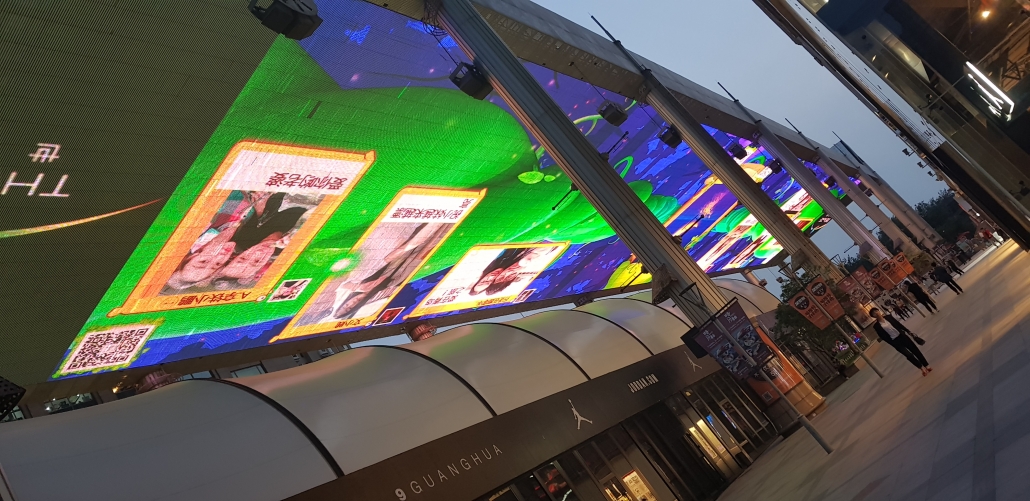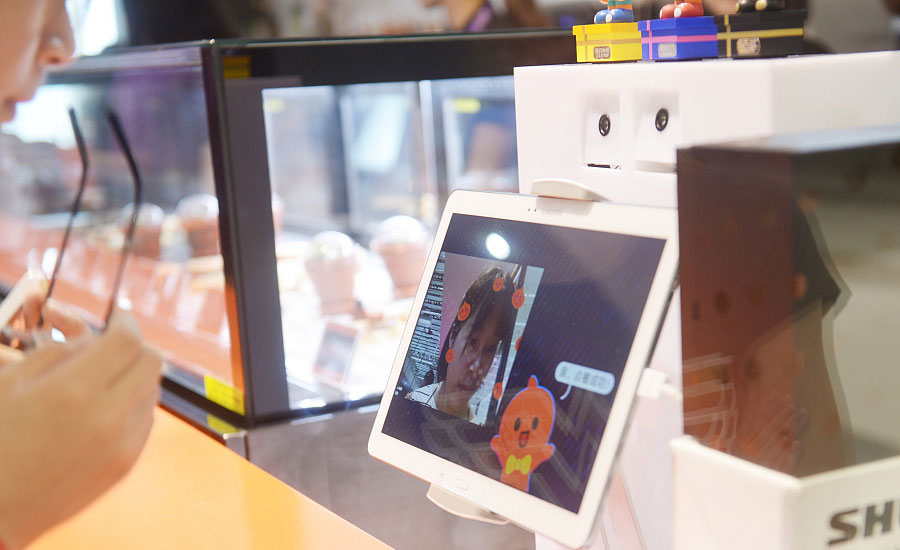In the series The inside story x 3, experts from the Plan.Net group regularly explain a current topic from the digital world from different perspectives. What does it mean for your grandma or your agency colleague? And what does the customer – in other words, a company – get out of it?
In the western media, China’s social credit system is often compared to the Nosedive episode of Black Mirror and described as an Orwellian nightmare. Based on online search requests, shopping history, education, criminal record, social media behaviour and many other factors, every citizen is to be evaluated according to a point system. If the three-digit score is too low, there are far-reaching consequences. some jobs will be blocked for you, your children will not be able to attend good schools, travel will be denied, and you’ll also be unable to get a loan. The picture of the social credit system painted by the western media looks very disturbing. But fortunately, the reality is not quite that bad.
China’s social credit system is an ecosystem composed of various initiatives
In 2014, the Chinese government announced a plan that provided for setting up an extensive social credit system by 2020. The aim is to improve governance and create order in a country that often has to combat fraud. As China is in the process of becoming a market economy, it still does not have properly functioning institutions, such as courts, to deal with these issues. For this reason, the Chinese government is trying to establish a kind of reward and punishment system to promote trustworthiness and integrity. The central Joint Punishment System puts citizens on a blacklist if they violate certain rules. For example, if a citizen is ordered by a court to pay a fine and does not pay, they are put on a blacklist. After that, the person concerned cannot book flights, travel first class by train, or purchase luxury items on TMALL or Taobao until they have paid the fine. Furthermore, they are denied access to loans and government jobs.
However, this Joint Punishment System does not assign scores to citizens. The basis for this mistaken idea is related to Alibaba. The Chinese government is not alone in working on a social credit system – private-sector companies have also launched initiatives. In the western media, these are often lumped together and confused with each other.
Like Amazon, Alibaba is an online retailer that provides a platform for merchants to sell their products to consumers. At the time when Alibaba set up its e-commerce business, China was largely a cash country in which few people had credit cards. To be able to implement their business model, Alibaba had to secure payment transactions between buyers and sellers. As there was no provider like Visa or MasterCard in China that could handle this task, Alibaba had to set up its own payment infrastructure. Alibaba’s subsidiary Ant Financial was established for that purpose. As most people in China cannot show a documented payment history, Alibaba needed other factors to enable them to assess the creditworthiness of consumers and build trust between merchants and purchasers. That was the origin of the Sesame Credit Score system.
The score can range from 350 to 950 points and consists of several factors: the amount of revenue at Alibaba, whether purchased products, as well as electricity and phone bills, are paid on time, the completeness of personal details, and social contacts.
In addition, the Public Bank of China (PBoC) plans to develop a national creditworthiness check comparable to the SCHUFA Report in Germany. However, they lack the data necessary for this, so in 2015 the PBoC contracted eight companies on a trial basis to develop an official credit scoring system. Sesame Credit was one of those companies. Due to privacy concerns and conflicts of interest, in the end none of these companies received an official licence for their rating system. Instead, a joint venture composed of the eight companies and the China Internet Finance Association was founded. This joint venture is called Baihang Credit, and it is the first uniform credit information agency in China.
The Sesame Credit score offers my grandma lots of advantages
Participation in the Sesame Credit point system is currently voluntary and does not have any downside for its users. Actually the score resembles a loyalty programme, like collecting air miles. Ant Financial cooperates with many external partners that reward customers who have high scores and offer them many advantages. For example, my grandma with her high score does not have to pay deposits for hotel bookings, car rentals or bike rentals. She is directed to the fast lane at airport security, and her visa application for Luxembourg or Singapore gets priority treatment. Quite a few singles also post their Sesame Credit score on Baihe, Alibaba’s online dating service, in the hope of increasing their chances.
The score is intended to be a means of building up mutual trust. However, its additional use outside the Alibaba platform and the immediate financial context as a criterion for government tasks, such as airport security or issuing a visa, is a questionable mix of different sectors.
Impact of the score on companies: are product categories evaluated differently?
In a press interview, Li Yingyun, Technology Director at Sesame Credit, indicated that the type of product purchased affects the score. For example, buying nappies would increase your score because the system thinks you are a responsible parent. By contrast, if you buy a lot of video games, you are seen as less trustworthy, with a negative impact on your score. Although Ant Financial later denied this statement, doubts remain. For companies that market their products on the Alibaba platform, this represents a great uncertainty. If their products are in a category that is weighted negatively by the algorithm, that could lead to declining sales of these products in future because consumers are afraid of losing points.
Do the scores of my colleagues affect my own score?
One thing that aroused interest in the western media was the rumour that the online behaviour of your friends could be considered in the calculation of your own score. Alibaba has denied this. According to their statements, what matters is the size of your social network, not the online behaviour of your contacts. That’s because the more verified friends you have, the less likely it is that your account is fake.
We should follow the developments in China with a critical eye
It remains to be seen how the social credit system will develop up to 2020. Nevertheless, presently there is not (yet) any overarching AI-based super-system that evaluates the Chinese population according to a rating system and affects all aspects of their lives.
When it comes to China and technology, we quickly assume the worst and can easily imagine nightmare scenarios. However, the developments are often a bit more complex, and a critical attitude to news from the Far East is worthwhile. Especially for companies that are active in the Chinese market, it is essential to do your own research and keep a close eye on the market. The following websites that report on technological, economic and cultural developments in China can serve as a starting point:
- Tech In Asia and Technode are blogs that discuss technology trends and the latest news on start-ups and large companies in China. Technode posts short daily briefs that explain what is happening and why the news is relevant. Their China Tech Talk podcasts are also recommended.
- The South China Morning Post has a good business section as well as extensive technology coverage. If you’re looking for the latest headlines on China’s Internet heavyweights Alibaba, Tencent or JD.com, that’s the right place. However, you should bear in mind that Alibaba bought the newspaper in 2015.
- Radii China primarily deals with the cultural aspects of present-day China, and Magpie Digest gives good insights into China’s youth culture.










